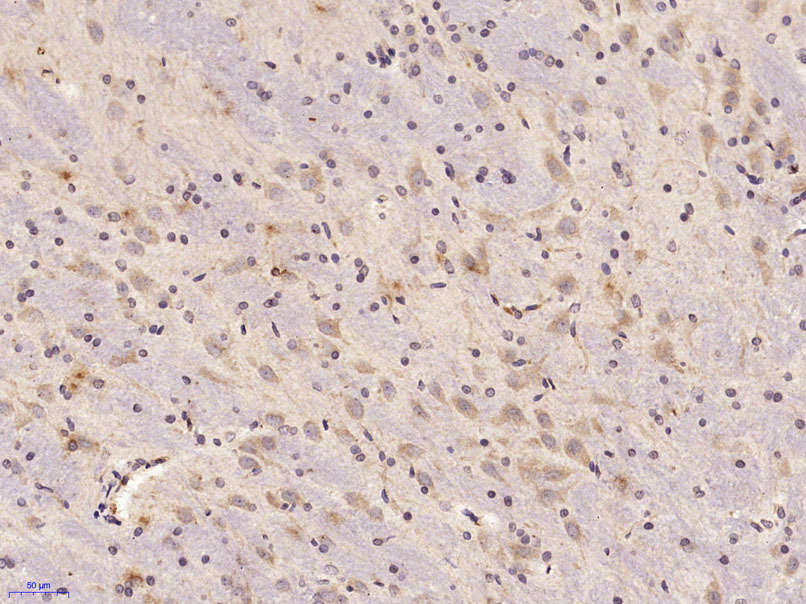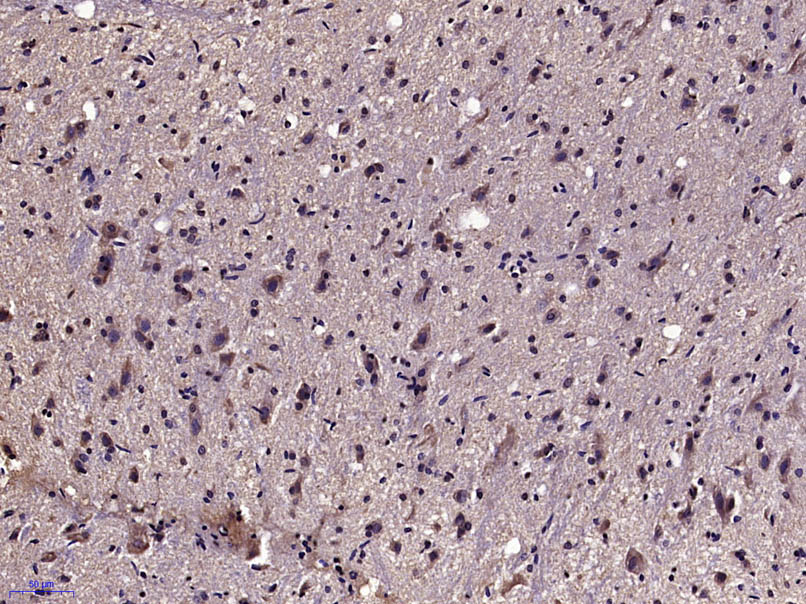
Rabbit Anti-KLK7 antibody
Kallikrein 7; Chymotryptic stratum corneum; hK 7; hK7; hSCCE; hSCCE; Kallikrein 7 (chymotryptic stratum corneum); Kallikrein related peptidase 7; Kallikrein-7; Kallikrein7; KLK 7; Klk7; KLK7_HUMAN; Protease serine 6; PRSS 6; PRSS6; SCCE; Serine protease 6
View History [Clear]
Details
Product Name KLK7 Chinese Name 激肽释放酶7抗体 Alias Kallikrein 7; Chymotryptic stratum corneum; hK 7; hK7; hSCCE; hSCCE; Kallikrein 7 (chymotryptic stratum corneum); Kallikrein related peptidase 7; Kallikrein-7; Kallikrein7; KLK 7; Klk7; KLK7_HUMAN; Protease serine 6; PRSS 6; PRSS6; SCCE; Serine protease 6; Signal protein; Stratum corneum chymotryptic enzyme; Stratum corneum chymotryptic enzyme. literatures Research Area Tumour Cell biology immunology Signal transduction Kinases and Phosphatases Cytoskeleton Extracellular matrix Ubiquitin Immunogen Species Rabbit Clonality Polyclonal React Species Rat, (predicted: Human, Mouse, Dog, Pig, Cow, ) Applications ELISA=1:5000-10000 IHC-P=1:100-500 IHC-F=1:100-500 IF=1:100-500 (Paraffin sections need antigen repair)
not yet tested in other applications.
optimal dilutions/concentrations should be determined by the end user.Theoretical molecular weight 24kDa Cellular localization Secretory protein Form Liquid Concentration 1mg/ml immunogen KLH conjugated synthetic peptide derived from human KLK7: 101/200/253 Lsotype IgG Purification affinity purified by Protein A Buffer Solution 0.01M TBS(pH7.4) with 1% BSA, 0.03% Proclin300 and 50% Glycerol. Storage Shipped at 4℃. Store at -20 °C for one year. Avoid repeated freeze/thaw cycles. Attention This product as supplied is intended for research use only, not for use in human, therapeutic or diagnostic applications. PubMed PubMed Product Detail The human tissue Kallikrein gene family encodes 15 serine proteases. All Kallikreins share structural similarities including cysteine residues, a catalytic triad of His, Asp, and Ser residues, typically five coding exons and varied intron phases. Kallikreins are predominantly secreted as inactive zymogens prior to activation by cleavage of an N-terminal peptide and all function extracellularly. Kallikreins can be activated autocatalytically, via other Kallikreins, or additional proteases. While structurally similar, Kallikrein family members have distinct functions and have key roles in many physiological and pathological processes. Many human tissue Kallikreins also show promise as cancer biomarkers, which may facilitate earlier detection and characterization of many forms of cancer.
Kallikrein 7, also known as stratum corneum chymotryptic enzyme (SCCE) and PRSS6, is a chymotrypsin-like serine proteinase. Originally described from human skin as a serine protease involved in shedding of skin cells and remodeling if the skin, SCCE was later identified as Kallikrein 7. Kallikrein 7 is found at the highest levels in the skin, often complexed with the endogenous serpins SLPI or elafin and kallikrein 7 can be found complexed to a number of different proteinase inhibitors. In addition to skin, Kallikrein 7 has been found in the kidney, esophagus, neuronal tissues, amniotic fluid, saliva, breast milk, urine, synovial fluid, seminal plasma and serum. Kallikrein 7 has been reported to be decreased in the CSF of Alzheimer's patients and message levels of KLK7 were decreased in adenocarcinoma. In skin, overexpression of hK7 has been shown to cause a form of dermatitis and in psoriasis hK7 is expressed in higher levels than controls. The skin adhesive proteins corneodesmosin and desmocollin 1 have been reported to be substrates of Kallikrein 7, as is interleukin 1 and the insulin B-chain.
Function:
May catalyze the degradation of intercellular cohesive structures in the cornified layer of the skin in the continuous shedding of cells from the skin surface. Specific for amino acid residues with aromatic side chains in the P1 position. SCCE cleaves insulin B chain at '6-Leu-|-Cys-7', '16-Tyr-|-Leu-17', '25-Phe-|-Tyr-26' and '26-Tyr-|-Thr-27'. Could play a role in the activation of precursors to inflammatory cytokines.
Subcellular Location:
Secreted. Note=In ovarian carcinoma, secreted and also observed at the apical membrane and in cytoplasm at the invasive front.
Tissue Specificity:
Abundantly expressed in the skin and is expressed by keratinocytes in the epidermis. Also expressed in the brain, mammary gland, cerebellum, spinal cord and kidney. Lower levels in salivary glands, uterus, thymus, thyroid, placenta, trachea and testis. Up-regulated in ovarian carcinoma, especially late-stage serous carcinoma, compared with normal ovaries and benign adenomas (at protein level).
Similarity:
Belongs to the peptidase S1 family. Kallikrein subfamily.
Contains 1 peptidase S1 domain.
SWISS:
P49862
Gene ID:
5650
Database links:Entrez Gene: 5650 Human
Omim: 604438 Human
SwissProt: P49862 Human
Unigene: 151254 Human
KLK7目前认为是卵巢癌 宫颈癌 前列腺癌等其他Tumour很有意义的Maker。激肽释放酶KLK是激肽系统的主要限速酶,它是一组存在于多数组织和体液中的丝氨酸蛋白酶,是一种肽链内切酶。KLK又称血管舒缓素,包括15个家族成员。在不同的组织中广泛表达,具有蛋白水解酶的活性。它特异性的在碳末端切割底物肽,可裂解激肽原释放具有活性的激肽,由激肽发挥对Cardiovascular系统及肾脏功能的调节作用。
组织KLK是一个大的基因家族,主要分布在肺、肾、血管、脑、肾上腺组织,为一种中等大小的glycoprotein。Product Picture
Bought notes(bought amounts latest0)
No one bought this product
User Comment(Total0User Comment Num)
- No comment




 +86 571 56623320
+86 571 56623320
 +86 18668110335
+86 18668110335

